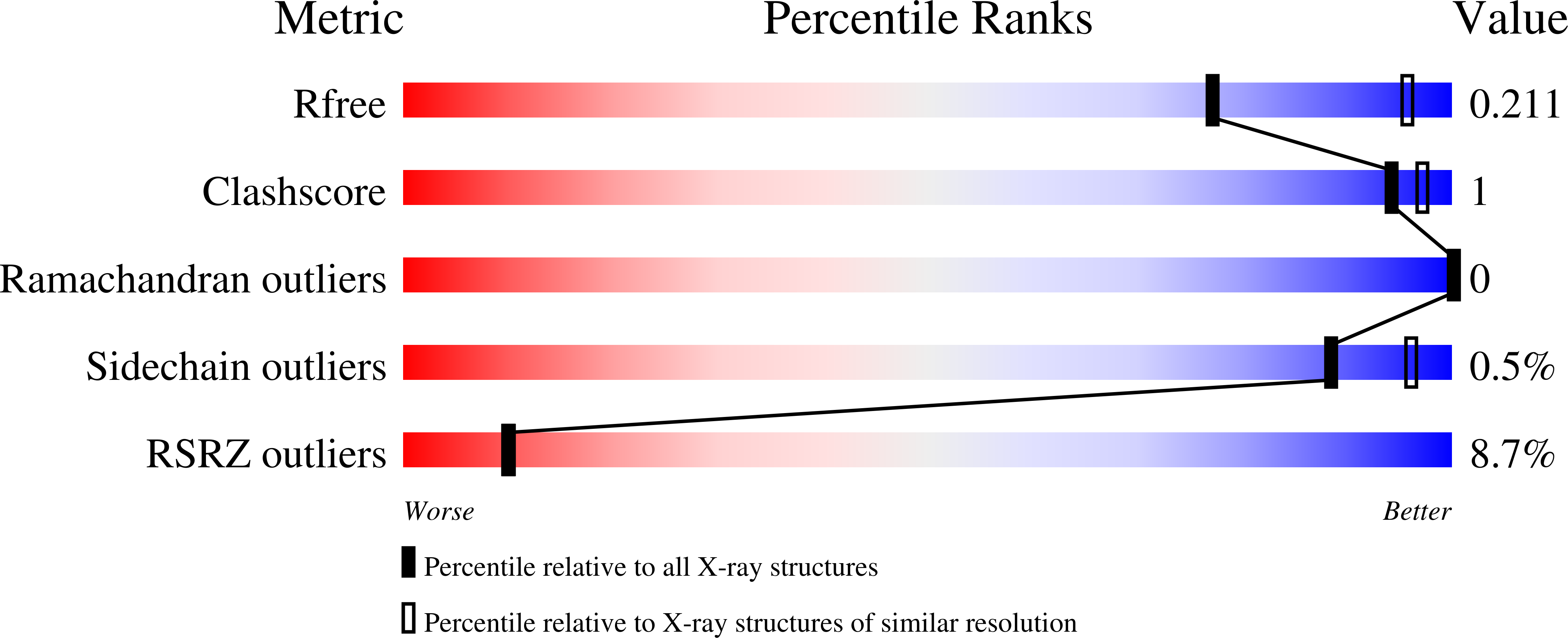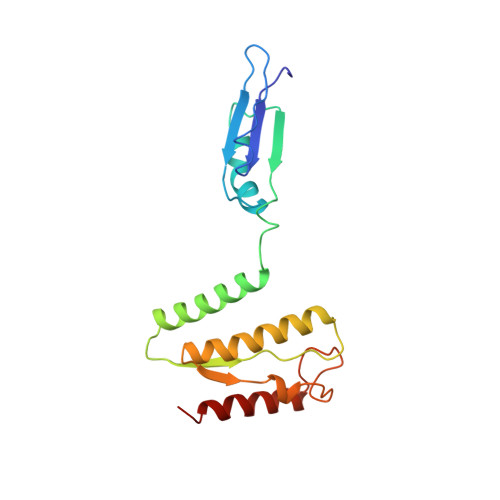Structure and Properties of the Esterase from Non-Ltr Retrotransposons Suggest a Role for Lipids in Retrotransposition.
Schneider, A.M., Schmidt, S., Jonas, S., Vollmer, B., Khazina, E., Weichenrieder, O.(2013) Nucleic Acids Res 41: 10563
- PubMed: 24003030
- DOI: https://doi.org/10.1093/nar/gkt786
- Primary Citation of Related Structures:
4C1A, 4C1B - PubMed Abstract:
Non-LTR retrotransposons are mobile genetic elements and play a major role in eukaryotic genome evolution and disease. Similar to retroviruses they encode a reverse transcriptase, but their genomic integration mechanism is fundamentally different, and they lack homologs of the retroviral nucleocapsid-forming protein Gag. Instead, their first open reading frames encode distinct multi-domain proteins (ORF1ps) presumed to package the retrotransposon-encoded RNA into ribonucleoprotein particles (RNPs). The mechanistic roles of ORF1ps are poorly understood, particularly of ORF1ps that appear to harbor an enzymatic function in the form of an SGNH-type lipolytic acetylesterase. We determined the crystal structures of the coiled coil and esterase domains of the ORF1p from the Danio rerio ZfL2-1 element. We demonstrate a dimerization of the coiled coil and a hydrolytic activity of the esterase. Furthermore, the esterase binds negatively charged phospholipids and liposomes, but not oligo-(A) RNA. Unexpectedly, the esterase can split into two dynamic half-domains, suited to engulf long fatty acid substrates extending from the active site. These properties indicate a role for lipids and membranes in non-LTR retrotransposition. We speculate that Gag-like membrane targeting properties of ORF1ps could play a role in RNP assembly and in membrane-dependent transport or localization processes.
Organizational Affiliation:
Department of Biochemistry, Max Planck Institute for Developmental Biology, Spemannstrasse 35, 72076 Tübingen, Germany and Friedrich Miescher Laboratory of the Max Planck Society, Spemannstrasse 39, 72076 Tübingen, Germany.














